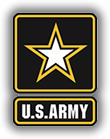Overview
Highlights
Environmental Health and Protection
- Altitude Readiness Management System (ARMS): Integrated handheld software decision aid to plan, monitor and manage unit altitude exposure of unacclimatized Soldiers, predicts altitude illness risk and task performance. Mobile application delivered to Nett Warrior in FY16.
- Soldier Water Estimation Tool (SWET): Integrated handheld software decision aid to provide potable water intake requirements for mission planning in hot environments, wearing military ensembles, and different levels of task work. Mobile application delivered to Nett Warrior in FY16.
- Environmental Sentinel Biomonitor (ESB): Developed system with two portable sensors to test drinking water in deployed situations and rapidly identify toxicity from wide range of chemicals. Milestone C achieved in FY16.
- Real-Time Physiological Status Monitoring (RT-PSM): Wearable system of physiological and performance sensors to assess Soldier thermal strain, energy expenditure, cognitive and physical performance; provides actionable information to prevent injuries and predict readiness. Partnered with PM Medical Support Systems (USAMMDA).
- Environmental Hazards Assessment and Risk Management: Integration tool for environmental hazard assessment of adverse health effects following Soldiers’ exposure to industrial chemicals.
Injury Prevention and Reduction
- Occupational Physical Assessment Tool: TRADOC/USARIEM initiative to determine performance requirements for physically-demanding MOSs and develop gender-neutral standards assessments to match Soldiers to right MOS, increase MOS success and prevent injuries. Implemented Army-wide in Jan 2017
- Neurosensory Return to Duty Toolkit: Battery of validated military relevant performance tests (incorporating shooting, moving, and communicating) and assessment tools to ensure the Service member can return to duty safely after suffering traumatic brain injury.
- Eye Protection: Transition to military materiel developers optometric standards and guidelines for protective eyewear that will increase aircrew acceptance, protection, and compatibility with flight systems.
- Hearing Protection Standards: Development of validated impulse noise limits standards and hearing protection testing methodology guidelines for hearing hazard assessments.
- Pharmaceutical Intervention for Noise-induced Hearing Loss: Successful S&T program (Materiel Development Decision JUL 16) for prophylactic administration to prevent/mitigate noise-induced hearing injury and, in turn, prevent permanent and irreversible hearing loss.
Physiological Health and Performance
- Fatigue and Sleep Management: Developed 2B Alert, a user-friendly platform-specific tool to predict alertness based on sleep/wake history, circadian factors, and countermeasures. System being used by US Air Force and Federal Aviation Administration (FAA).
- Healthy Eating and Lifestyle Training Headquarters (H.E.A.L.T.H.): Congressionally-supported effort to aid Soldiers/Families to maintain weight, fitness, combat readiness, and performance using portable, interactive technology; transitioning to Performance Triad platform for implementation.
- Recovery Nutrition: Specifications for rations/menus/dining facility feeding plans to promote rapid recovery after missions by replenishing nutrients/energy, promoting muscle/bone/brain healing, optimizing cellular resistance to trauma/stress, and accelerating recovery from physical injury or illness.
- Physiological Basis of Resilience: Initiated studies in high intensity, high stress training scenarios to begin to document biomarkers that are predictive of performance under stressful conditions.
- Concussion: Development of transfer algorithm to predict likelihood of concussion/mTBI given certain impact and/or blast exposure; Validation of appropriate neurocognitive assessments used to aid concussion diagnosis.
- Load Carriage Decision Aid (LCDA): Comprehensive tool that predicts Soldier metabolic cost as a function of individual and clothing characteristics, load carried, terrain, weather, and nutritional intake. Tool provides Soldiers and their leaders with guidance to prevent physical injuries associated with over-burden that can improve mission success. Currently in Advanced Development.
Psychological Health
- PTSD: Contributed to new PTSD definition in American Psychiatric Association Diagnostic and Statistical Manual of Mental Disorders (DSM-V); Systems Biology Enterprise filed patent disclosure for biomarker panel to diagnose/screen for PTSD and co-morbid illnesses; Three weeks of compressed exposure based therapy appears to be as effective as 15 weeks of weekly sessions; Examining complementary and alternative medicine approaches, such as dog therapy, acupuncture, acupressure and transcendental meditation.
- Resilience: Updated Army Spouse/Couples Resilience Training (pre-/post-deployment) through the Army Resiliency/CSF2; Group intervention providing coping skills training/support to spouses of deployed Soldiers improved spouse resilience and coping behaviors, and decreased depression/anxiety/role strain. Mindfulness training shows promise in promoting resilience.
- Military Family Research: Enrolled ›10,000 spouses in Family Cohort study linking to Millennium Cohort Service Members (›200,000 enrollees); Demonstrated effectiveness of a telephone support intervention for spouses. Results led to wide-scale VA program implementation.



